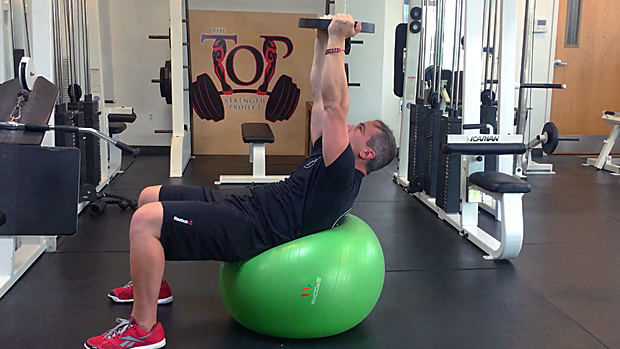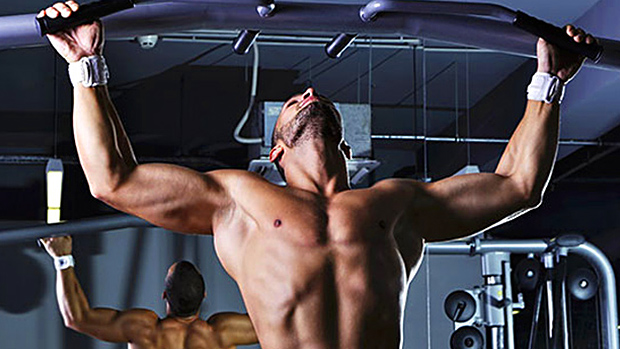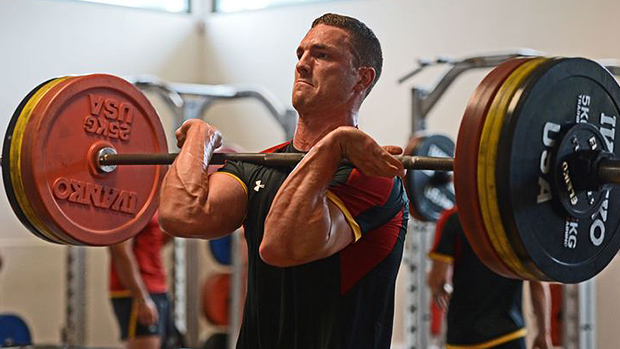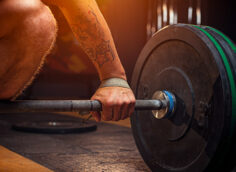Here's what you need to know...
- When you take a breath, your trunk should expand 360 degrees. Imagine having a large rubber band around your belly button and another one around your chest and upper back. Both rubber bands should expand as you take in a breath.
- The next time you go into a squat, hold the bottom position and take a full breath before coming back to the top. This will increase the intensity/effort of the training session.
- When you do planks and iso-holds, don't hold them for a certain time period, but a certain number of breaths.
It may be hard to believe, but in the strength and conditioning, physical therapy, and performance enhancement world, one of the most talked about subjects is breathing. Some couldn't care less and feel that working on breathing is a waste of time. Others believe that proper breathing will cause performance to skyrocket, cure cancer, and stave off the zombie apocalypse.
While I find myself somewhere in the middle – breathing correctly can definitely help increase performance – I know that using your breath, whether it's a completely flawless breath or not, has distinct benefits in your pursuit of a more herculean frame.
Focusing on breath can improve strength output, help to vary training, increase training intensity, and help promote recovery and relaxation... all good things for long term progress towards more strength, muscle, and a chiseled build. I know you're skeptical, but read on.
A Simplistic Explanation of Breathing
If you Google "breathing patterns," you'll be bombarded with different takes on what a proper breath truly is. While it would take a book to explain breathing patterns in the detail it deserves, I want to make it as simple as possible: When you take a breath, your trunk – which I'll refer to as the area between your hips and shoulders – should expand 360 degrees.
That means your belly, lower back, and sides should push out – a diaphragmatic breath. Additionally, your ribs should expand both out and up a bit. If one of these isn't happening, you're not getting a full breath. Imagine having a large rubber band around your belly button and another one around your chest and upper back; both rubber bands should expand as you take a breath in.
When you breathe out, the opposite should happen; all of your air needs to be expelled. It should take roughly twice as long to exhale as it does to inhale.
That's it. Simple, but oh-so rare. Try it while you're sitting there reading this. Chances are it feels slightly alien. Regardless, I don't want you to think any more about a proper breath as the following tips are simpler concepts that will help you enhance training, stave off boredom, and recover more efficiently. For real.
Just Breathe To...
Increase Strength
One of the biggest breathing problems I see with athletes is that their timing is all off! There's no rhythm to their breath and this is decreasing performance. When going through an exercise, you should be breathing out during the concentric muscle action and breathing in during the eccentric action.
For example, during a push up, you should be inhaling right before you descend into the push up and you should breathe out as you transition to push yourself away from the ground. I commonly use the cue, "Blow yourself off the floor" to get athletes to time their breath correctly.
The same goes for pressing (bench press, overhead press, etc.) in thinking that you should be "blowing" the implement (dumbbell, kettlebell, barbell, etc.) away from your body.
During pulling motions you should be exhaling as you pull the implement towards your body (bent over barbell rows or standing cable rows). When you're using your body as resistance (a pull up, TRX row, etc.), you should be exhaling as you pull your body towards the implement.
During squatting, deadlifting, lunging, step ups, jumping, bounding, swings, etc. you should exhale as you come away from the floor, box, platform, etc. As far as throwing (medicine balls, Dyamax balls, etc.), you should exhale as you're releasing the implement.
Fixing the timing of your breath will help increase intra-abdominal pressure when it's needed most and it can enhance overall force production and strength. It's a pretty simple way to put up more weight, jump farther, and throw harder. Unfortunately, while everyone seems to think they already know this, very few actually do it correctly.
Monitor Time During Static Exercises
When we utilize static positions during training (think planks, side planks, and split squat iso-holds), we typically hold them for a set period of time or until fatigued. Instead, try getting into position and completing a certain number of full breaths.
For example, assume a plank position and take 6 full breaths, remembering to focus on expanding the entire trunk 360 degrees and then fully breathe out. Don't allow your body to change position while taking the full breath.

Increase the Intensity of Any Exercise
The goal of training is to progressively overload the body (increase intensity) in order to promote adaptations and subsequent improvements in strength, power, and endurance. Two common ways to increase the overall intensity (effort/exertion) of training are to either add more resistance or increase volume. While both are necessary for long-term progress, increasing one or the other (or both) consistently can lead to negative side effects that prevent further improvement.
Rather than flirting with excessive overreaching and subsequent overtraining, try utilizing a mid-rep breath to increase intensity. This method will increase time under tension as it makes each rep a little longer, and it'll also challenge you to maintain control of the movement while the diaphragm is changing position.
This is hugely challenging and explains why we like to hold our breath during exercises. However, when you breathe during a static hold, you're forced to "own your position" since you're giving up the false stability that holding your breath creates.
The next time you go into a squat, hold the bottom position and take one full breath before coming back to the top. It might force you to use less resistance, but it'll increase the intensity/effort of the training session. It'll also allow you to feel and own the bottom position, which is the position where most trainees are the weakest and often lose the movement.
Increase the Effectiveness of a Stretch
While everyone doesn't need to do static stretching, those who do can increase the effectiveness of the stretch by adding controlled breaths. For example, get into a common hip flexor stretch with one knee on the ground and one knee up (the 90/90 position). Hold the stretched position and take in deep, controlled breaths. You'll feel the stretch getting deeper and better as you increase intra-abdominal pressure.
The goal is keep yourself from changing position while taking the deep breath and to make sure that the stretch is enhanced on the targeted tissue (the hip flexor). While this will take some practice, getting to an end-range stretch and concentrating on taking deep, controlled breaths will make your stretching sessions much more productive.
Relax and Promote Recovery
Training creates a sympathetic tone and environment, which although is necessary to produce wanted adaptations (strength, size, and badassary), constantly being "toned" or "jacked" up throughout the day will cause elevated levels of cortisol, which, as you know, reduce recovery and ultimately lead to burnout, less strength, and a softer body.
You've heard it before, but "just take a deep breath and relax." It's a simple statement but one that holds a lot of weight, especially when it comes to continuing to push weight and improving performance.
Finish off a training session and work in a few minutes per day to take a few deep, controlled and full breaths to better promote recovery and continue progress. Try supine breathing, prone breathing, and all-fours breathing. This old chestnut supports the point: "It's not how hard you train, but how well you recover that matters."
Not a Bunch of Hot Air
A more efficient breathing pattern will enhance performance, decrease pain, and promote better overall movement. Exactly what constitutes efficient breathing, and how to best accomplish it, is still up for debate and requires more research. However, what's not up for debate is the fact that the simplistic use of breathing during training, post training, and throughout the day will make you better in every way.





